
6 Inch Cake Recipe
After extensively testing cake recipes, this is my absolute favorite 6 inch cake base. It’s super fluffy but not too spongy, perfectly balanced vanilla and buttery flavor and simple to make! I’ve adapted this recipe into so many different flavors.
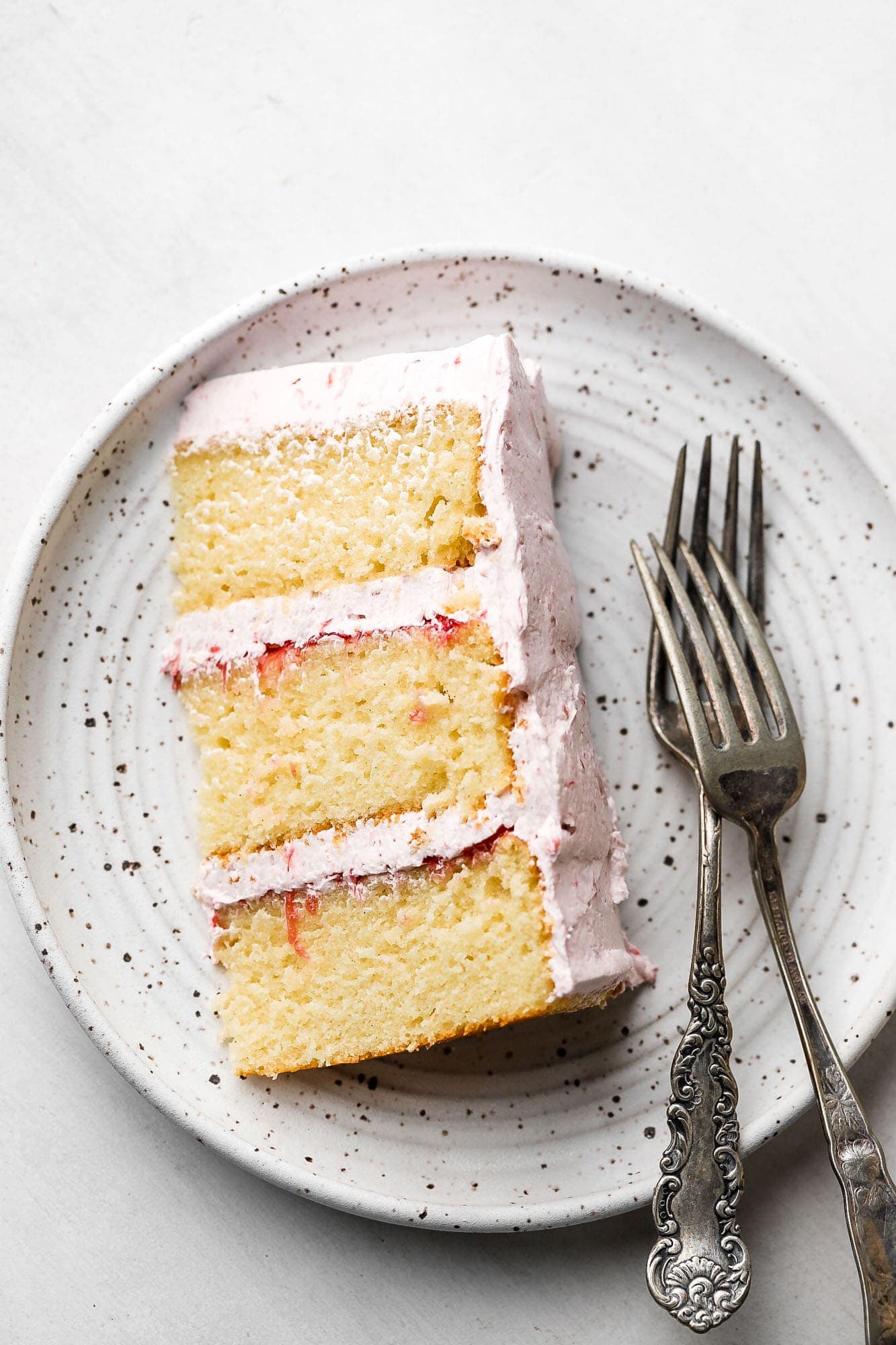
The time has come my friends! If you’ve seen any of my previous cakes, I usually bake 6 inch cakes. My recipes are developed for the casual home baker and most people don’t need to serve more than about 10 people at a time.
I have tested many cake recipes over the last couple years and although some have been phenomenal they just weren’t the one. I wanted the perfect 6 inch cake that I could use on it’s own as vanilla or as a base for other recipes. Now, we know that perfect is different to everyone so let me describe my version of perfect.
What makes this the perfect 6 inch cake recipe?
Texture: I wanted the texture of this cake to be pretty tight. I don’t like when there are large air tunnels throughout in my cake or when the crumb is too crumbly or too bread-y. I wanted a perfect combination of moisture, density, and fluffiness.
For instance, if your cake has too much moisture, it can be kinda gummy and super dense and heavy. We obviously don’t want that. If the cake is super light and airy, it can be a little too spongy or not sturdy enough to stack three layers. Many factors play into making the perfect cake.
Flavor: To me, the perfect cake tastes like a combination of butter, sugar, flour, milk and vanilla. I don’t want my cake to taste super buttery, I don’t want it super sweet and I certainly don’t want it to taste like just cake flour* or buttermilk. Cake flour and buttermilk obviously have their place in cakes but there needs to be a good balance.
*sometimes I find that some brands of cake flour provide a different flavor
Simplicity: No one wants to make the BEST cake out there if the ingredient list is inaccessible or the instructions are obnoxious. Some will still say this one is way too much work but remember, you’re making a cake from scratch… not a box mix.
Adaptability: I wanted my perfect 6 inch cake to be easily adapted to other flavors. I’ve tried many different version of this cake with different flavors and it’s very versatile.
I would not recommend adding anything that will vastly alter the wet to dry ratio but you can certainly do things like substitute ¼-½ cup of flour for graham crackers or cocoa powder, etc.
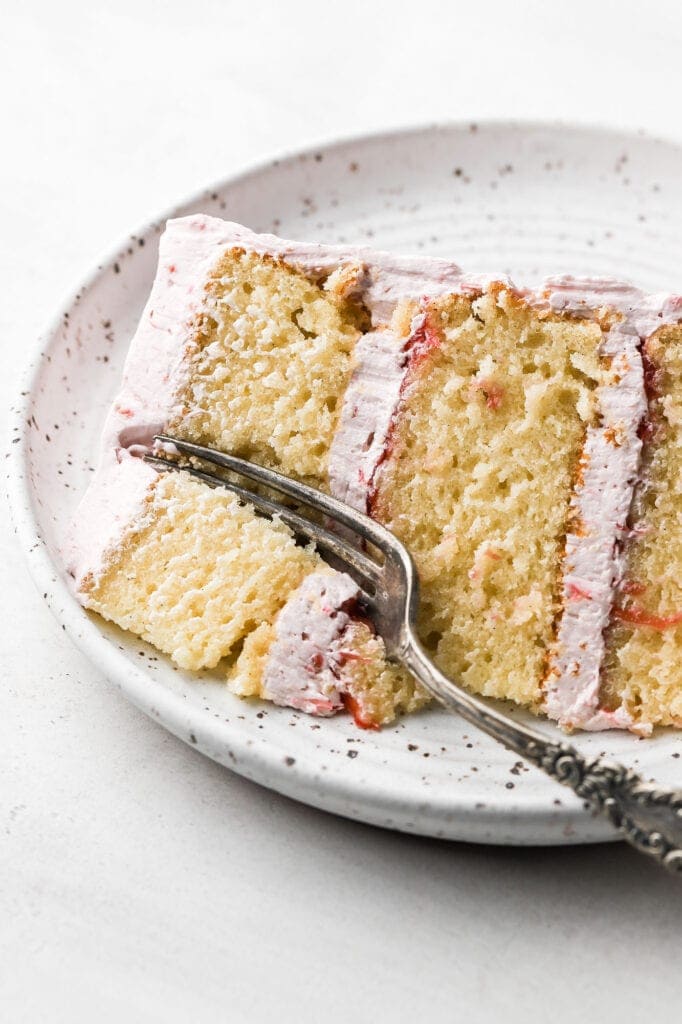
Ingredients & Substitutions:
- Flour: I use all-purpose flour although cake flour is known to produce better results in cakes… better is an opinion, lol. Personally, I don’t care for the taste of some cake flours. The texture may be more tender, but it’s not worth someone going out to buy cake flour just to make a cake. This recipe was developed specifically to use all-purpose flour since that’s what most people have at home.
- If you get anything from this post, please let it be this. I HIGHLY recommend a digital scale to measure your ingredients, especially flour. If the cake is dry and you measured with a cup, this is probably why.
- If you absolutely have to use cups, make sure to fluff up the flour, spoon it into a measuring cup and level it off.
- Fat: I use butter and oil in almost all my cake recipes because I like the flavor from the butter and I like the texture produced by the combination of both fats. I find that oil alone is sometimes too spongy and not quite as pleasant in a plain cake. Whereas using all butter usually results in a cake that’s a bit more stiff.
- Whole Eggs: you simply can’t argue against the flavor and richness that egg yolks bring to the table. I use egg whites when I specifically wanted my cakes to be white without a yellow tint but this cake was developed for optimal flavor and texture so whole egg all the way!
- Sugar: I mean do we need to talk about this one? YES WE DO, because some people think it’s ok to remove up to half of the sugar from a recipe because “they don’t want it so sweet”…I get it. But the truth is homemade cakes are nowhere near as sweet as store bought ones (at least mine aren’t) and if you want to remove sugar, use a European based buttercream instead of an American.
- Sugar is not only there for sweetness. It caramelizes to provide color and flavor, creates tenderness and locks in moisture.
- Liquid: I was a firm believer in buttermilk before I did all this testing. Now I am a firm believer in sour cream. The difference in texture and flavor was mind blowing from the very first test.
- If you really don’t have access to sour cream you can substitute it for 3/4 cup of plain yogurt or Greek yogurt.
Guided Instructions
Step 1: Beat together the butter and sugar for 1-2 minutes with the whisk attachment.

Step 2: Add the oil and continue beating for another 1-2 minutes.
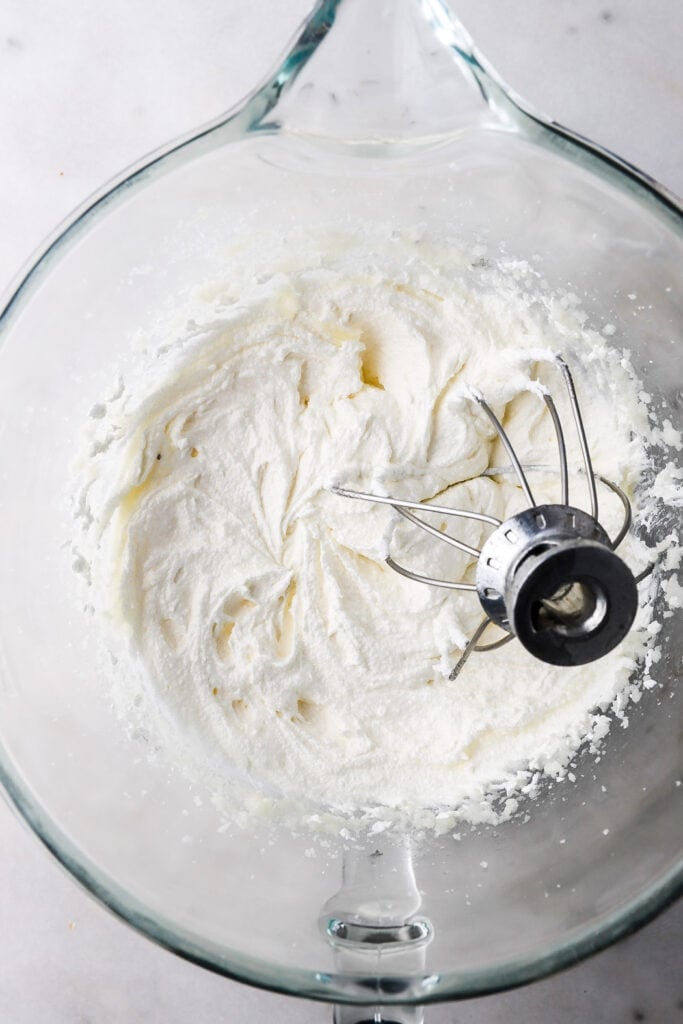
Step 3: Add the eggs, one at a time, beating for at least 30-60 seconds between each addition, until each one is combined. Add the sour cream and vanilla and mix just until they’re incorporated.

Step 4: Add in half of the dry ingredients, followed by the milk and then the other half of the dry ingredients. Mix just until the last streak of flour is combined.

Step 5: Distribute the batter evenly between three round 6 inch cake pans, about 14 ounces of batter in each one.
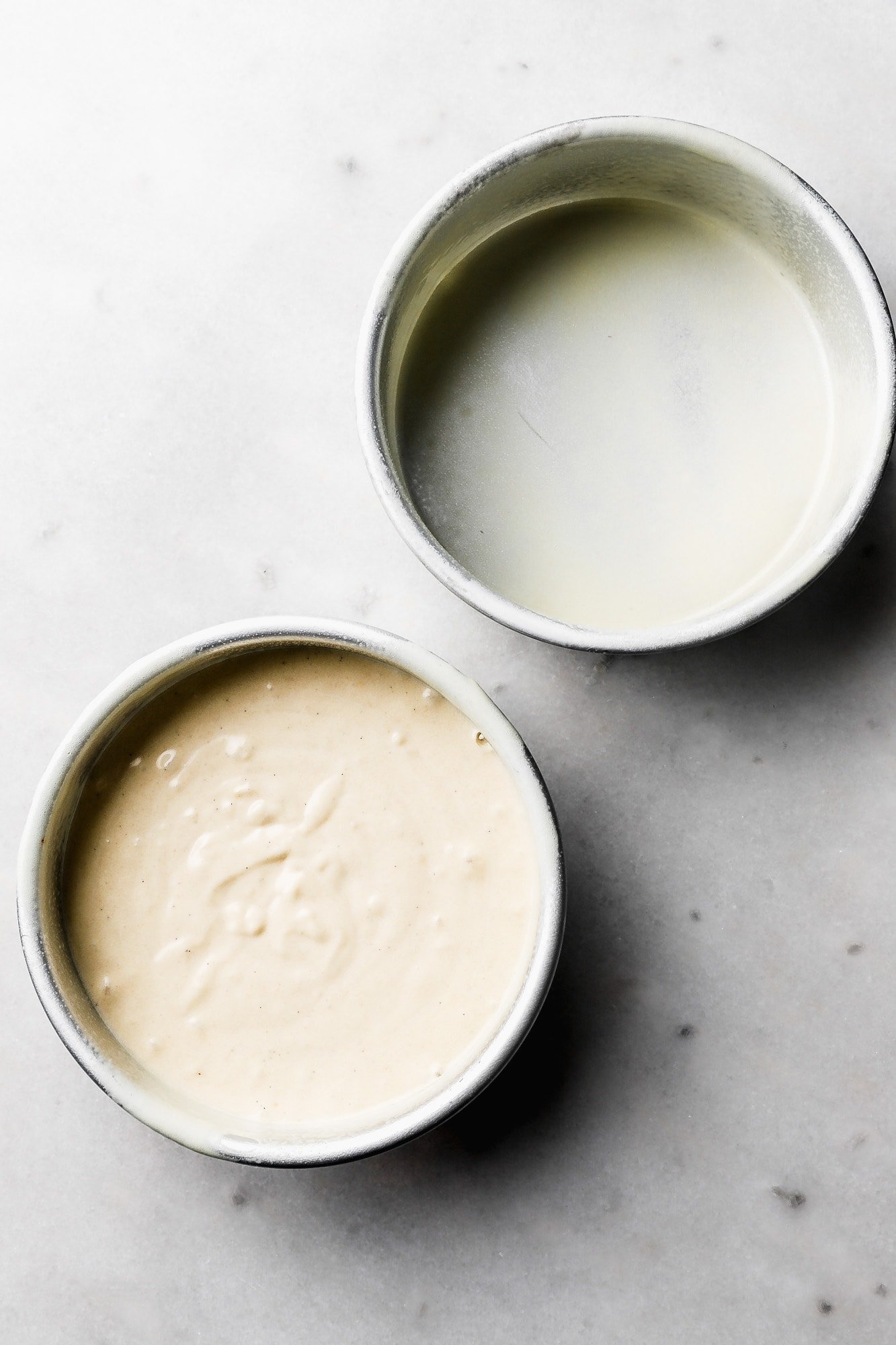
Step 6: Bake for 30-35 minutes, until the cake is golden brown, the edges released from the pan and/or the cake springs back when you press on it gently. Flip over onto a cooling rack or a tea towel and cool completely before frosting.
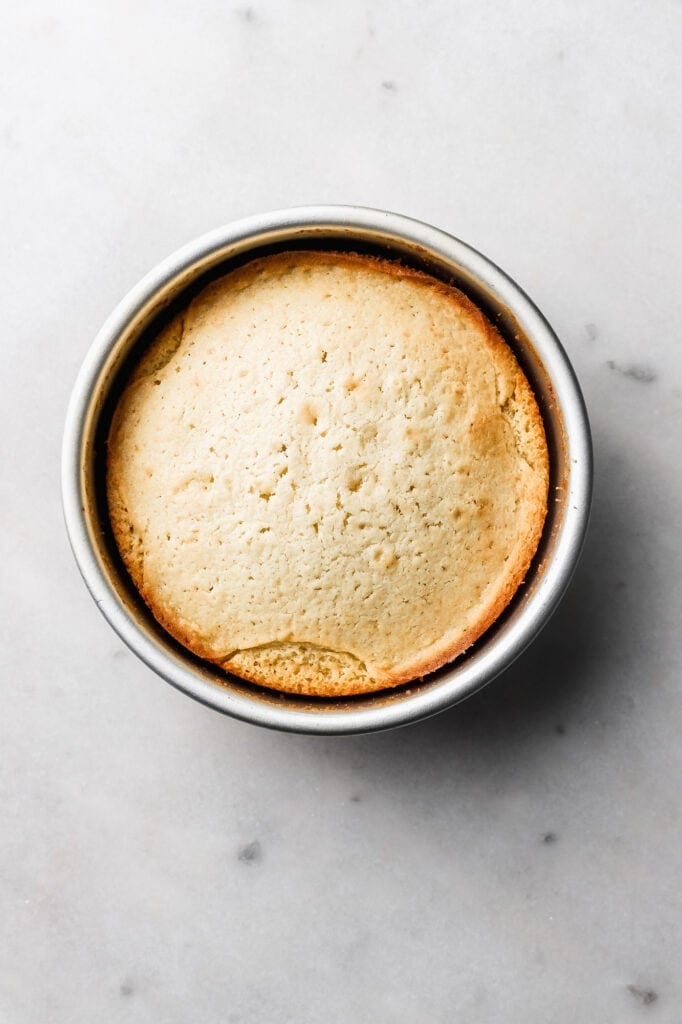
Step 7: Beat the butter until it lightens in color and get’s fluffy.
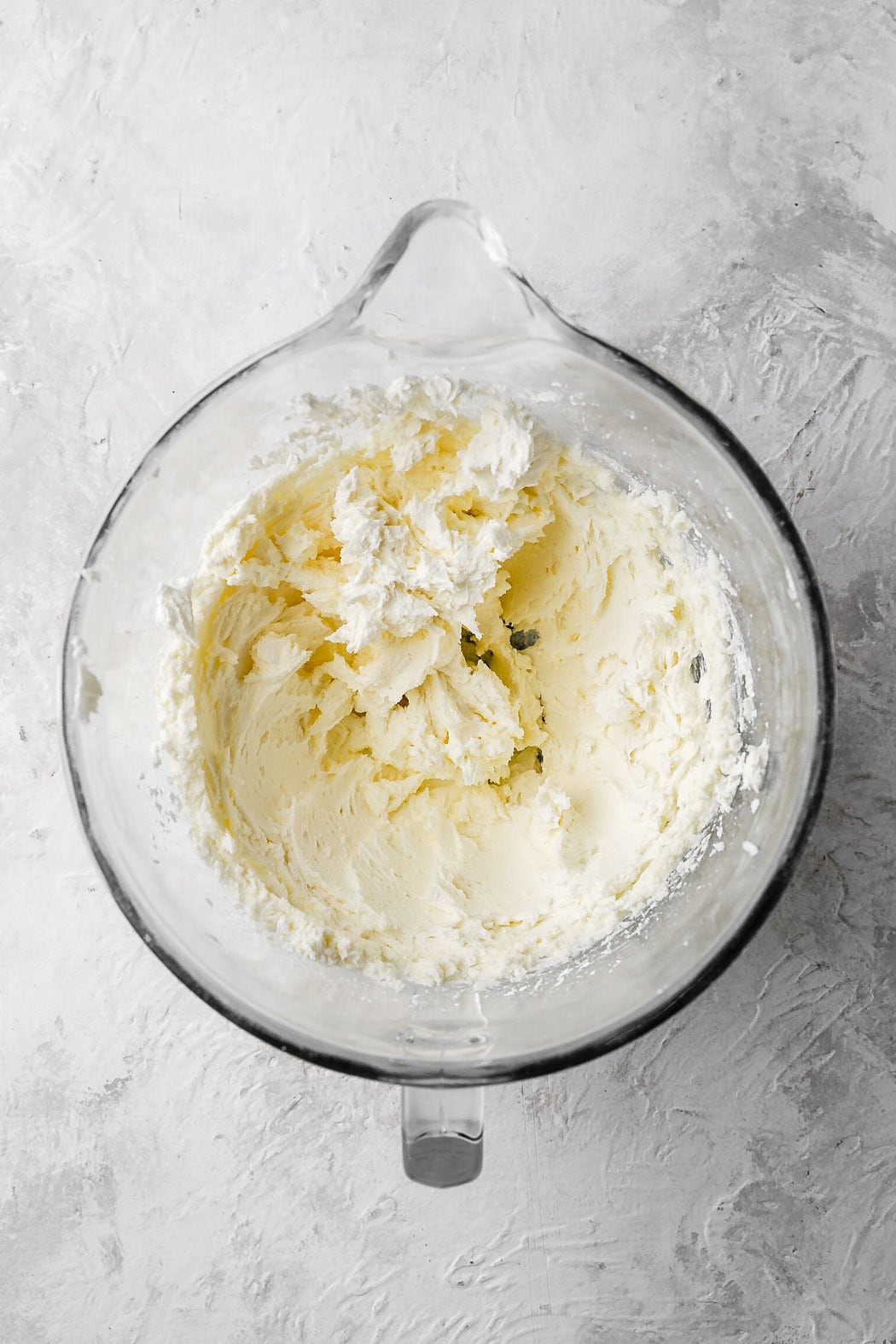
Step 8: Add the powdered sugar, cream and vanilla beat for about 5 minutes until it’s completely smooth.

Frequently Asked Questions
I’m sure you see this one a lot but please use room temperature ingredients. It’s not as hard as you think.
¼ cup of butter will soften to room temperature pretty quickly if you cup it up. Put the eggs in warm water for 5 minutes. Microwave the milk for 20 seconds if you need to.
This ensures that the right amount of air is incorporated into your cake and that the batter emulsifies properly. If your batter ever looks split/curdled when you add the eggs, it’s most likely either the temperature of your ingredients or the fat to liquid ratio is off.
Honestly I rarely encounter this problem. I typically just use a baking spray made with flour to grease my cake pans. I feel like that’s not as common as greasing with plain butter or flour but it works for me and it’s so much easier. If you’re really nervous you can use parchment paper to line the pans as well.
This is important because a good cake can become a dry cake in a matter of minutes. Most people insert a toothpick and if it comes out clean, the cake is done baking but that’s unnecessary in my opinion.
If your cake pans are greased properly, the cake should release itself from the edge of the pan once it’s fully baked (you can see that in the photo with the baked cake in the pan).
Another way to know is that as soon as the top of the cake no longer looks wet, gently press on the center of it and if it springs back, it’s done. If your fingerprint stays pressed down then baked for another 1-2 minutes and try again.
Yes! I prefer a three layer round 6 inch cake. You could also make them square or make them thin layers by cutting them in half to make six 6 inch layers. This recipe can also make
Two layer 8 inch cake, bake for about 35 minutes
Two layer 9 inch cake, bake for about 30 minutes
One 9×13 inch cake, bake for about 45 minutes
I also scaled this cake to make a three layer 4 inch cake (or one layer 6 inch) (coming soon), three layer 8 inch cake, and three layer 10 inch cake! So if you love this cake and need a different size, I have those options as well.
I weight my batter for each layer to ensure that they are the same height.
Three 6 inch layers come out to about 15oz per pan.
Two 8 or 9 inch layers come out to about 22oz per pan.
Yes. This 6 inch cake recipe makes 24 cupcakes, HOWEVER, when I developed the recipe I wanted it to dome as a little as possible so they do bake up kind of flat.
I recommend a recipe developed specifically for cupcakes, like my favorite vanilla cupcakes.
Before you ask, I also would not halve this recipe to make 12 cupcakes because it has 3 eggs…
You can use dairy free butter, dairy free milk/cream to make any of my cakes. You can also use a dairy free butter for the buttercream.
All my cake recipes work well with a 1:1 gluten-free flour like Bob’s Red Mill and King Arthur Flour.
What kind of frosting to use on a 6 inch cake?
This type of cake pairs well with many different frostings. You can pair it with basically any European or American buttercream. My favorites are Swiss meringue buttercream and cream cheese frosting.
The cake featured in the post is the Rhubarb Vanilla Cake with Swiss meringue buttercream.
You can also try the most luxurious buttercream; I have a whole post on How To Make French Buttercream. Change the flavor with 1/2 cup (40g) cocoa powder or even 1/2 cup of Homemade Salted Caramel Sauce.
For more buttercream flavors, make sure to check out my new cookbook Frosted! It has 13 base frosting recipes to chose from and teaches you how to customize and troubleshoot them.
How much frosting do I need for a 6 inch cake?
To lightly cover a 6 inch cake, you can get away with a batch of frosting that uses 1 cup (227g) of butter but that won’t leave any extra for decorating.
If you’re looking to decorate as well, I recommend 1.5-2 batches of frosting so you’ll want to use at least 1 1/2 cups (340g) of butter.
For example, the Swiss meringue buttercream and the French buttercream, linked above, both use 1 cup of butter in their recipes. To make enough frosting for decorating, you’ll need 1.5-2x that.
So that would be 1 1/2 cups (300g) of sugar, 6 large egg yolks, about 1/3 cup (79mL) water, 1 1/2 cups (340g) butter, etc.

How to store layer cakes
Storing unfrosted cake layers (making ahead of time)
You can make the cake layers ahead of time. For best results, allow the cake layers to cool almost to room temperature. When they’re still just slightly warm, wrap them in plastic wrap and leave them on the counter overnight for one day.
If you’re making them more than one day in advance, you’ll want to freeze them. Place the plastic wrapped layers in a freezer bag, removing the excess air, and freeze on a flat surface.
You can remove the cakes from the freezer and frost right away or you can remove them a few hours earlier and bring them back to room temperature. If you’re frosting them frozen, make sure to let the cake rest so it thaws before serving.
How to store the finished cake
If the cake is fully frosted and unsliced, you can leave it on the counter overnight (as long it doesn’t use fresh fruit, cream cheese frosting, or anything that will go bad (unless it ever feels soft and unstirdy, then refrigerate it).
If the cake is partially sliced, cover any cut sections with plastic wrap or a cake dome. Place all the cut slices in an airtight container. It can stay at room temperature for a day or refrigerated for up to a week.
How to freeze the cake
If the cake is fully sliced, place the slices in an airtight container. Store at room temperature for 1-2 days or refrigerated for up to a week.
You can also individually wrap each slice in plastic wrap if you want to freeze them and remove one at a time. Place the container in a freezer bag and squeeze out all the excess air. You can store them in the freezer for up to 2 months.
You can also freeze the cake whole. To do this, refrigerate the cake until the frosting is firm, a couple of hours. Then wrap the whole cake in plastic wrap, twice and freeze for up to two months.
Let the cake thaw in the fridge over night. Then remove the plastic wrap and let it thaw on the counter until serving. Keep in mind, the cake is never as good as fresh but frozen is better than refrigerated.
This cake in other sizes
I scaled this round 6 inch cake into other commonly used sizes.
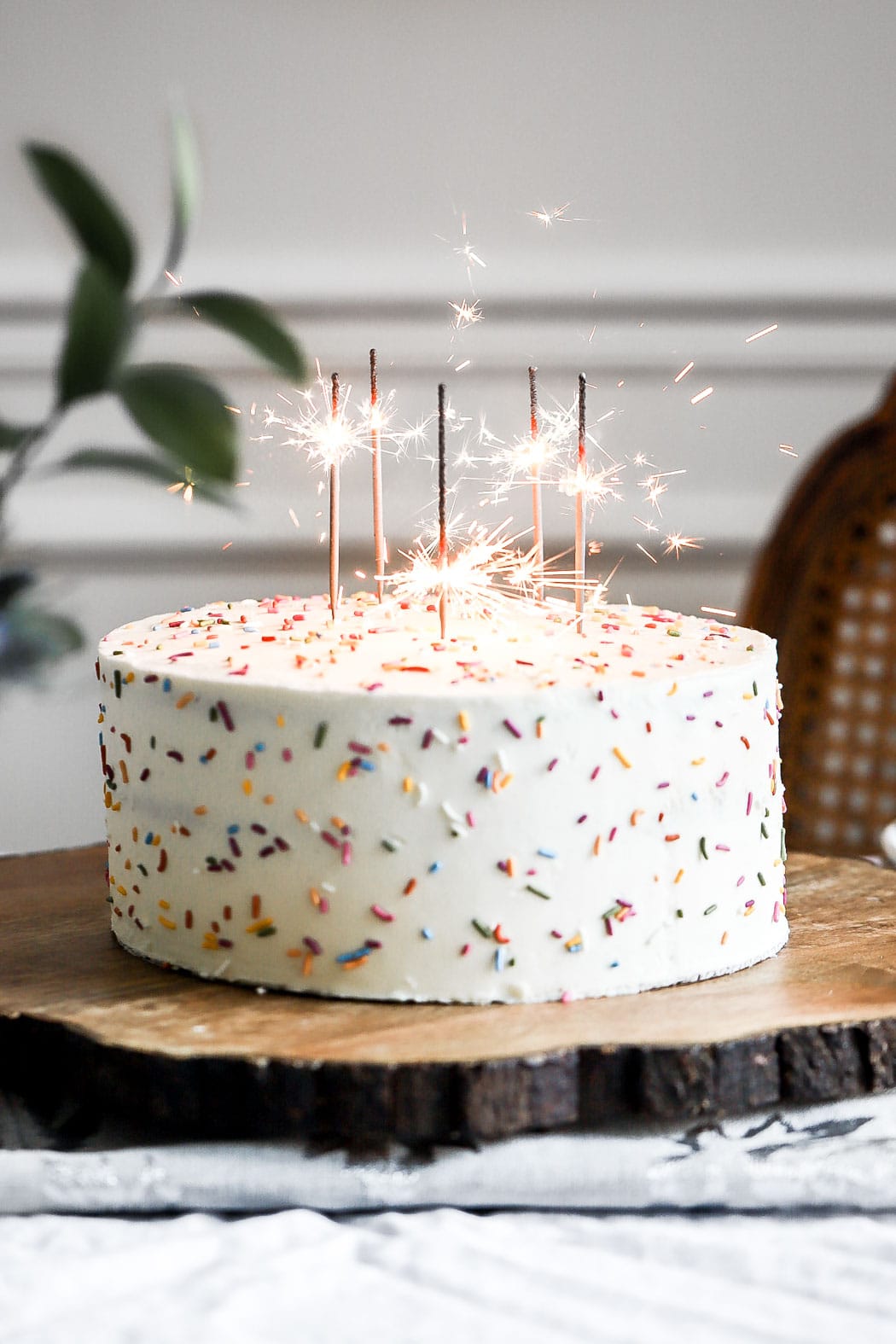

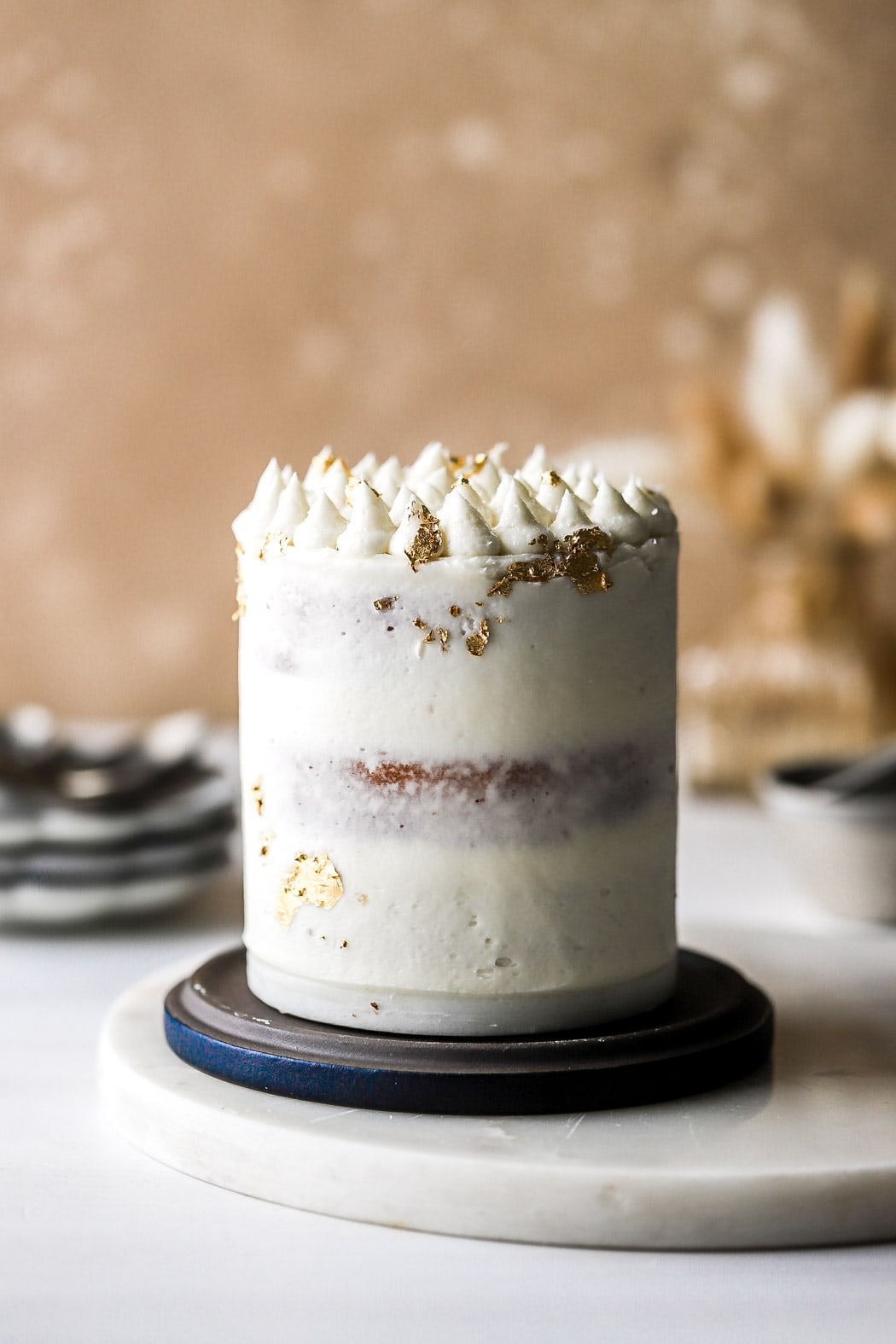
Recipes that I’ve adapted this cake into:
All of these recipes were adapted from this 6 inch cake recipe!
- Brown Butter Vanilla Chai Cake
- Brown Sugar Espresso Cake
- Brown Butter Cookie Butter Cake
- Fruity Pebble Cake with Cereal Milk
- Chocolate Chip Cake with Bourbon Caramel
- Vanilla Bean Creme Brulee Cake
- Classic Birthday Cake Recipe with 2 Ingredient Frosting
- Nutella Cake with 2 Ingredient Frosting
- Funfetti Cake with Paint Splatter Decoration
- Oreo Cake
- Vanilla Bean Creme Brulee Cake
- Apple Cider Donut Cake with Dulce de Leche Frosting
- Rhubarb Vanilla Cake
- Marble Cake with Buttercream Frosting
- Gingerbread Cake with Brown Butter Cream Cheese Frosting and Toasted Meringue
- Maple Spice Cake with Maple Frosting
- Churro Cake
- White Forest Cake

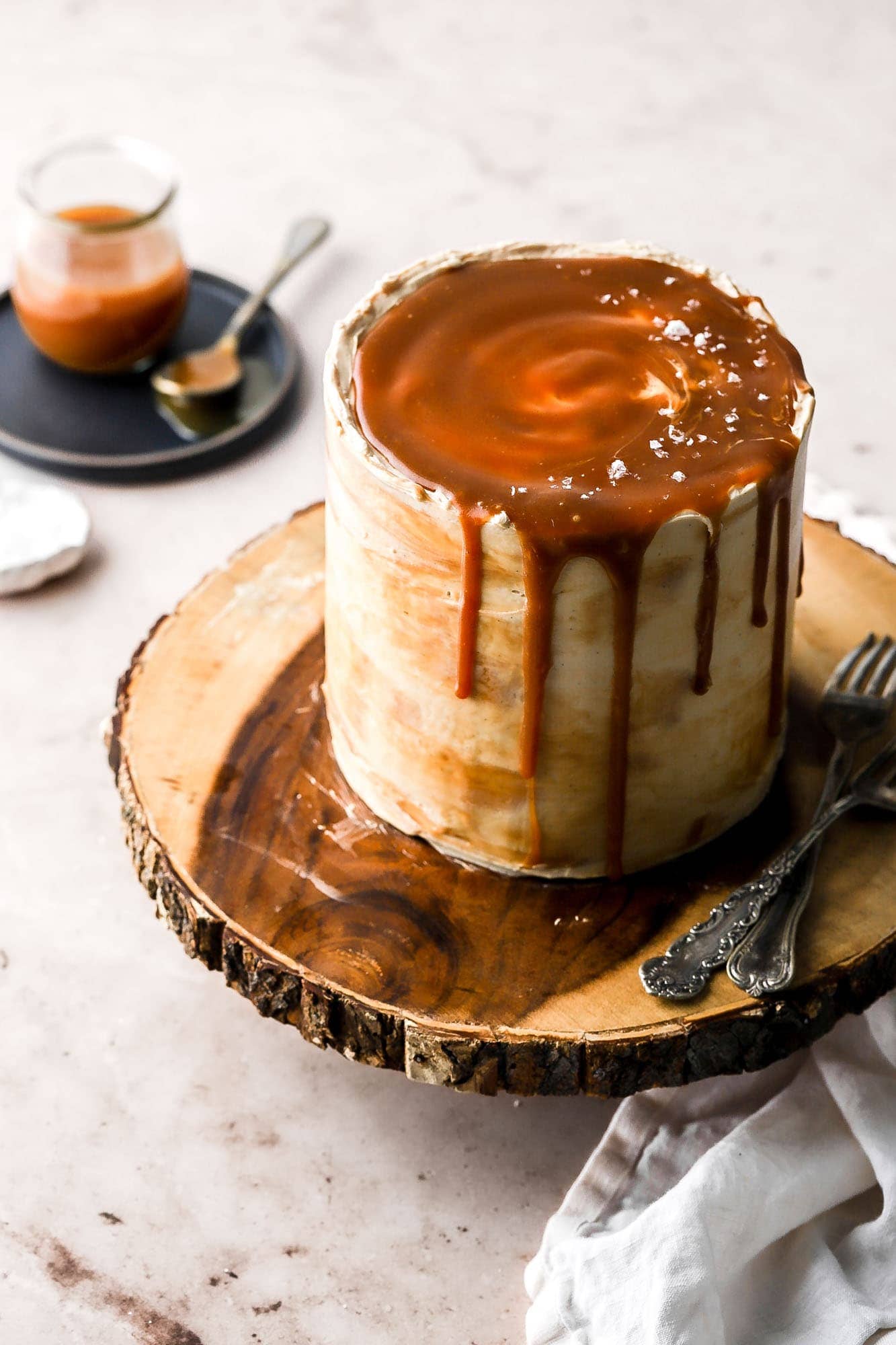


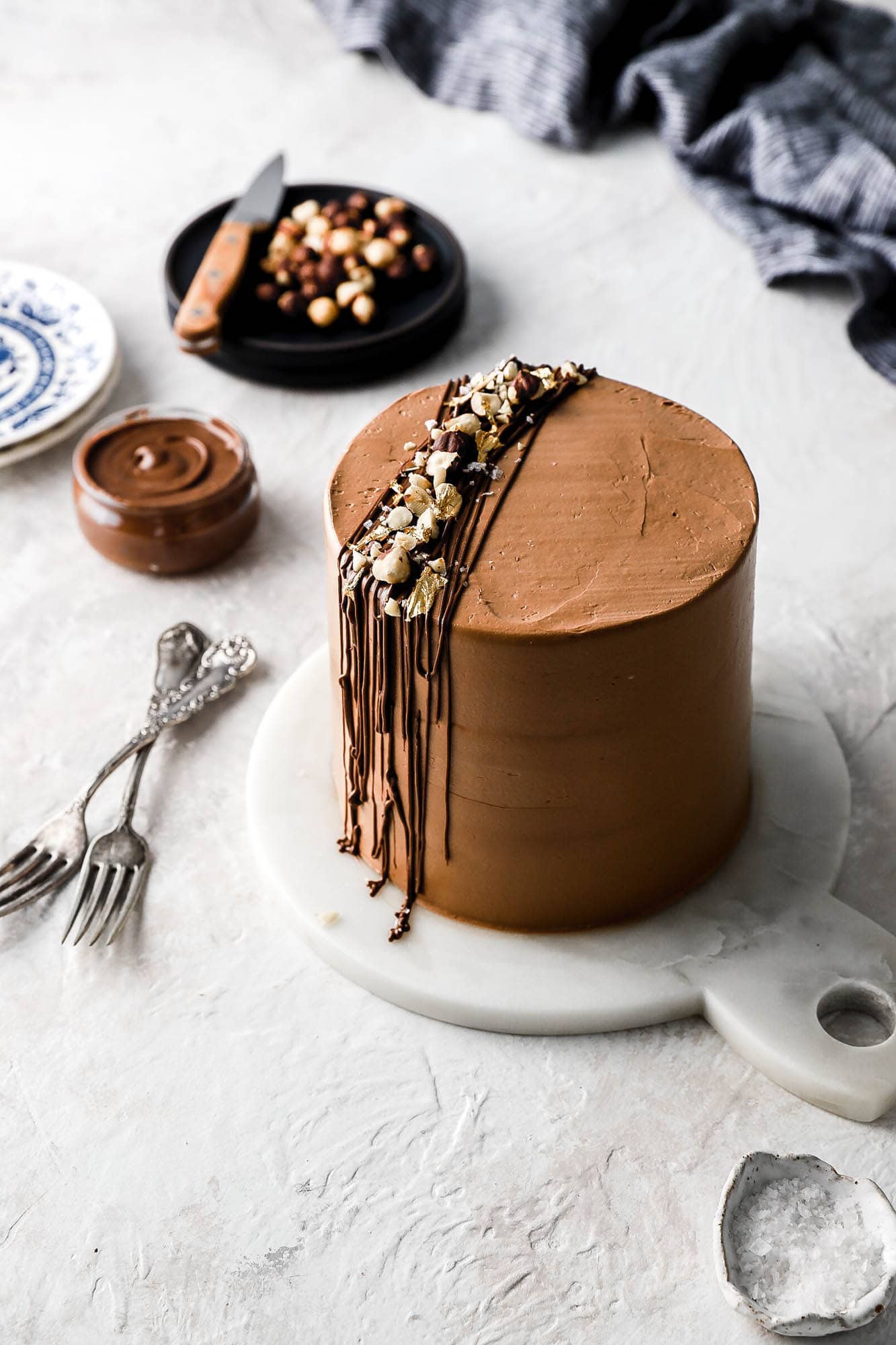

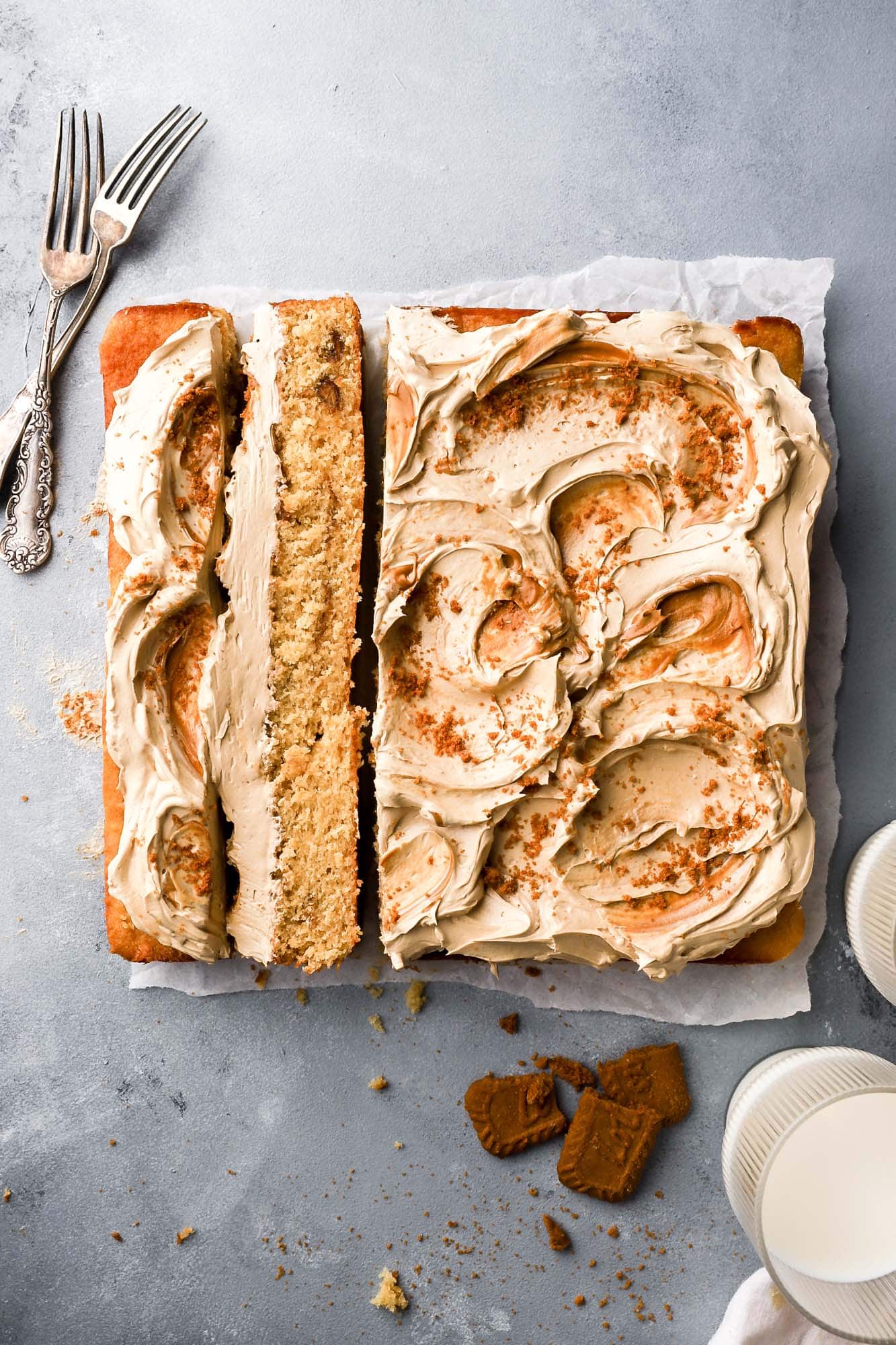
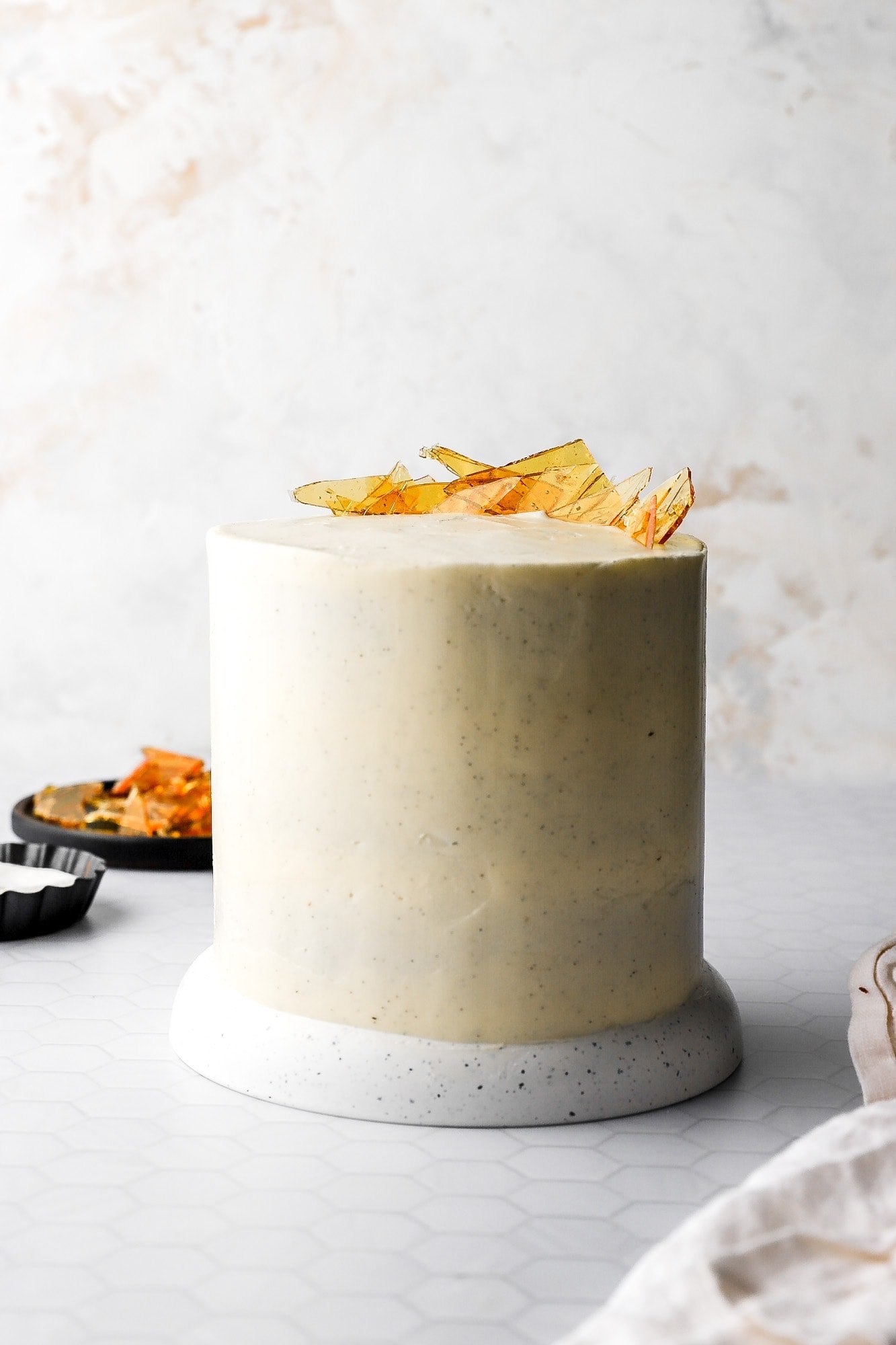

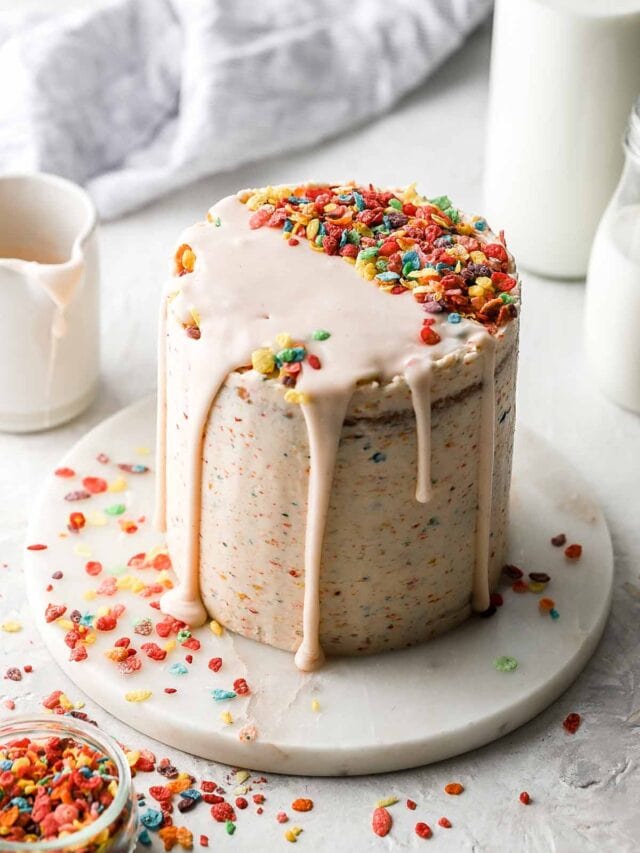

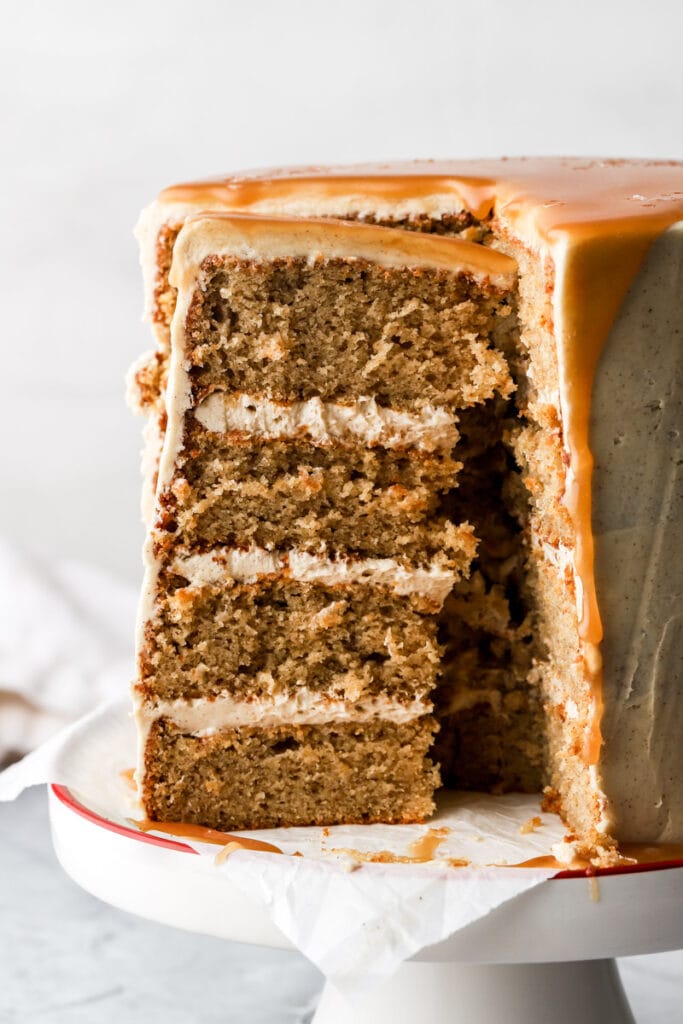

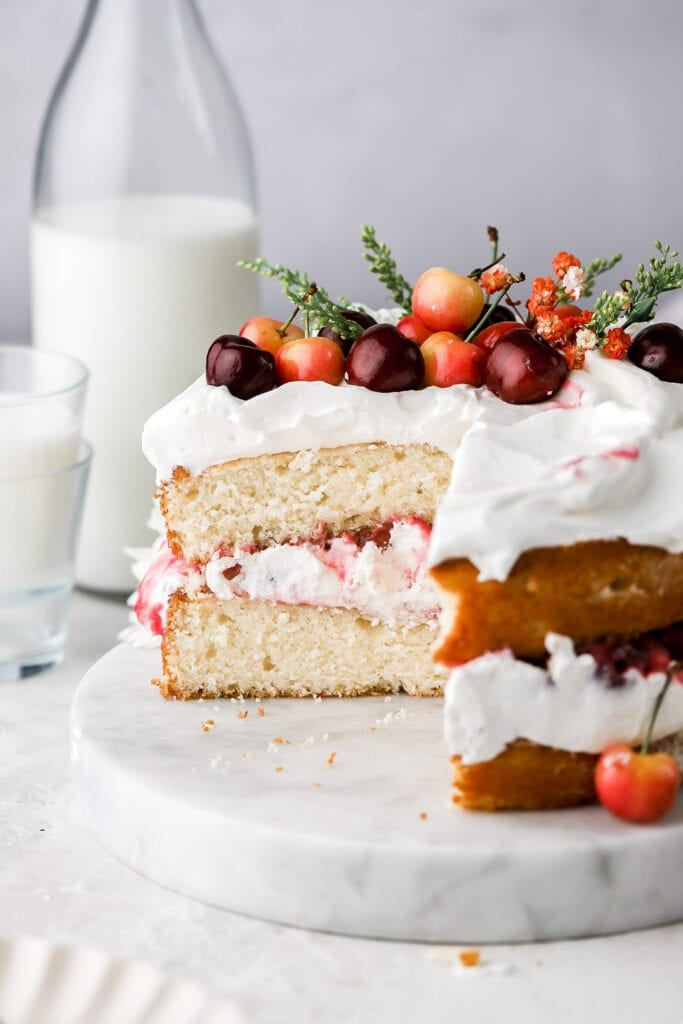
I’m very aware that this will not be everyone else’s favorite base cake recipe. I always welcome constructive criticism!
I’d be happy to answer any questions down below. If you make this cake, make sure to tag me @baranbakery on Instagram and show me what you made with it! As always, happy baking and have a blessed day!
Love, B
6 Inch Cake Recipe
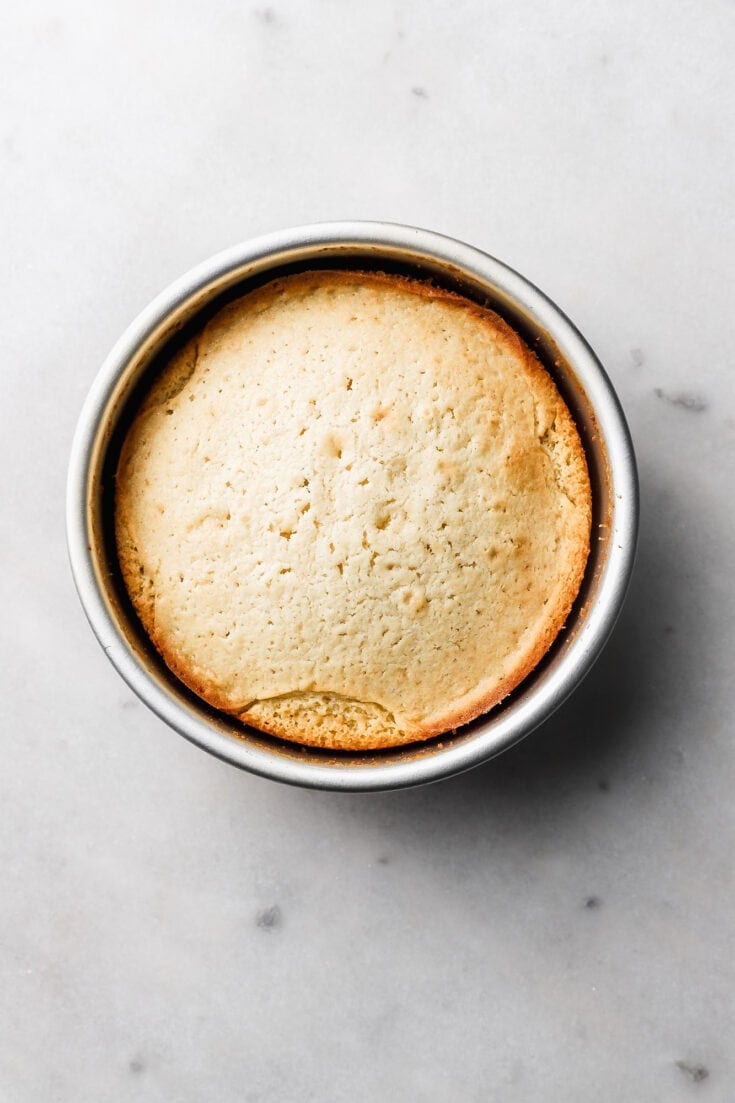
After extensively testing cake recipes, this is my absolute favorite 6 inch cake base. It's super fluffy but not too spongy, perfectly balanced vanilla and buttery flavor and simple to make! I've adapted this recipe into so many different flavors.
Ingredients
Vanilla Cake
- 2 1/4 (270g) cups all-purpose flour, spooned and leveled
- 1 Tbsp (10g) baking powder
- 1/2 tsp salt
- 1/4 cup (60g) unsalted butter, room temperature
- 1 1/2 cup (300g) granulated sugar
- 1/2 cup (120mL) vegetable or canola oil
- 3 large eggs, room temperature
- 3/4 cup (170g) sour cream, room temperature
- 2 tsp vanilla extract
- 3/4 cup (180mL) milk, room temperature
Vanilla Buttercream
- 1 cup (227g) unsalted butter, room temperature
- 4 cups (480g) powdered sugar, spooned and leveled
- 2 tsp vanilla extract or vanilla bean paste
- 1/4 cup (59mL) heavy whipping cream, room temperature
Instructions
6 inch cake
- Preheat the oven to 350°F (177°C) and grease and line three 6 inch cake pans.
- In a medium bowl, whisk together the flour, baking powder and salt until they're evenly distributed.
- Place the room temperature butter and the granulated sugar in a large bowl and use an electric mixer with the whisk attachment to beat them for 1-2 minutes. Add the oil and beat at full speed for another minute.
- Add the eggs, one at a time, beating on medium-high speed, for about a minute, until each egg is fully incorporated.
- Add the sour cream and vanilla extract and beat just until combined.
- Add half of the dry ingredients to the mixture, turn the mixer to low speed and stream in the milk, followed by the rest of the dry ingredients.
- Distribute the batter evenly among the three cake pans, about 14 ounces in each pan and bake for 30-35 minutes. When the cake is fully baked it will release itself from the edge of the pan and it will spring back if you press on the center of it.
- Allow the cake to cool completely before frosting.
Vanilla Buttercream
- Place the butter in a large bowl, or the bowl of a stand mixer, and use an electric mixer, at full speed, to beat the butter until it's pale and fluffy, about 2-3 minutes.
- Add the powdered sugar and beat at low speed just until it's combined.
- Scrape the edge of the bowl and continue beating at medium-high speed until the sugar is fully dissolved and fluffy, a few more minutes.
- Add the vanilla and turn the mixer to low-medium speed, pour in 2 Tbsp of heavy whipping cream and mix until it's well combined. Make sure to scrape the edge of the bowl.
- If you want it softer, add the extra 1-2 Tbsp of heavy whipping cream and mix until it's fully combined.
Assemble
- Use 1/2 of the buttercream to frost the first and second layer of the cake, and then use 1/4 for a crumb coat.
- Refrigerate the cake for 15-30 minutes, then use the last 1/4 of the buttercream to frost the rest of the cake.
Notes
You can bake these cakes up in advance. To preserve the moisture, allow the cakes to cool almost to room temperature, they should still be slightly warm. Wrap them in plastic wrap, place them in a freezer bag, press all the air out and freeze.
Remove them from the freezer when you're ready to frost, this makes it easier to frost and they will defrost by the time you're ready to serve.
If you want extra frosting for decorating, do 1.5x or 2x the amount of frosting. This is just enough to fully frost the cake.
Recommended Products
As an Amazon Associate and member of other affiliate programs, I earn from qualifying purchases.
Nutrition Information:
Yield:
10Serving Size:
1Amount Per Serving: Calories: 781Total Fat: 43gSaturated Fat: 20gTrans Fat: 1gUnsaturated Fat: 20gCholesterol: 139mgSodium: 305mgCarbohydrates: 95gFiber: 1gSugar: 73gProtein: 6g
Nutrition information may not be fully accurate.


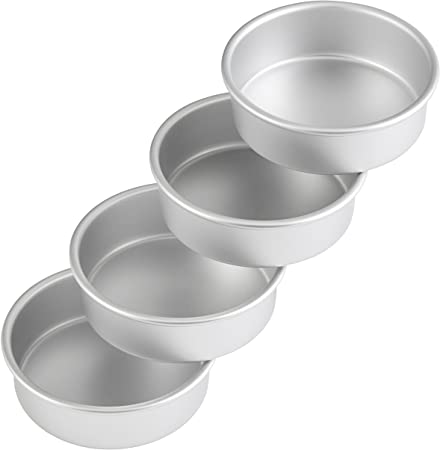

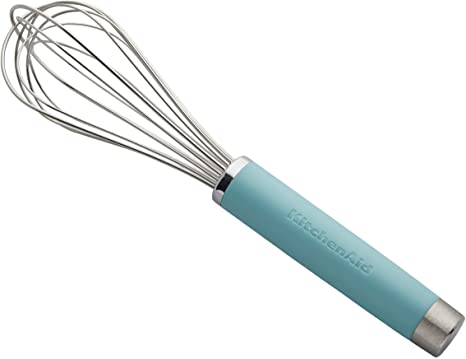
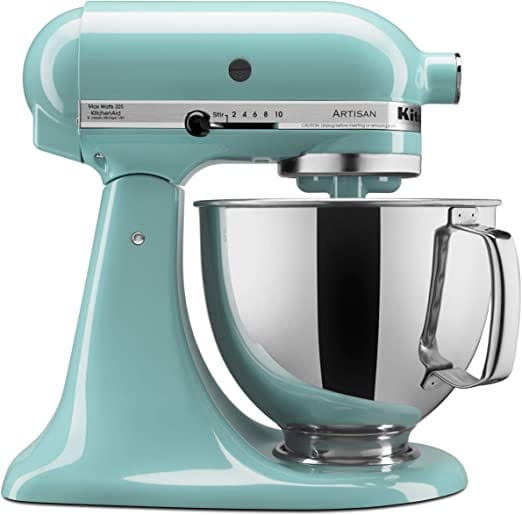
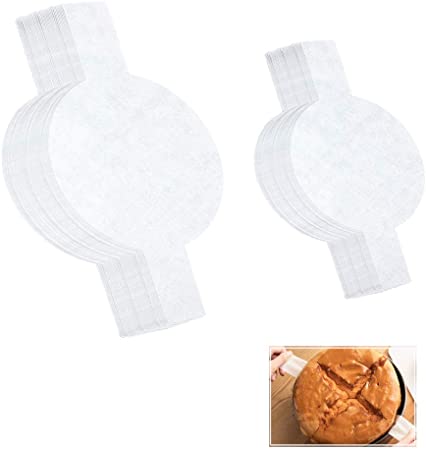
Hi,
I’m searching in vain for a 4 layer, 6 inch cake recipe. Do you have the measurements for that? Can I just increase everything by 1/3?
Thank you!
Hi Madeleine, you definitely could do that or you could just bake the recipe as is in four 6 inch layers.
Hello, I hope all is well.
I know in the recipe you mentioned that you adapted it to bake up flat. I typically use the Wilton cake strips to help them bake up flat and to reduce the browning around the edges of the cake. If I use the strips, do you think it will prevent the cake from coming out the same texture as yours in the inside since it will affect the bake time etc? Thank you in advance.
It should be just fine, maybe a couple of extra minutes in the ice
Oven*
Hello:) I have 6 inch pans, but they are 3 inches high. How would I adjust the bake time? Would I have to adjust temperature too? The recipe looks great !
No adjustments needed!
I cut the recipe down to a third and made one 6 inch cake. It is out of the oven and it looks beautiful. The only question I have is. How long should it cool in the pan, or should it be immediately removed from the fan once it comes out of the oven? Can’t wait to taste it.
I usually flip them onto a tea towel right away 🙂
Can I use all oil and no butter? Last time I made a cake using all butter and once it’s in the fridge, it’s hard like a rock. Cakes using all oils like carrot cake recipe always come out soft and fluffy even after being in the fridge.
You can, it will just alter the texture/flavor slightly. but yes generally butter cakes are better served at room temperature. I like to freeze them if I have leftover because the temperature of a freezer will trap the moisture in and when it defrosts it’s almost as good as fresh. Whereas the refrigerator just dries cakes out.
This came out so well.
I baked this cake in two cake pans and reduced sugar to 250g and it was perfect.
I also added some nuts and dried fruits rolled in flour on top.
I avoid seed oils so I tried this with substituting the oil for the same amount of melted coconut oil. The taste is amazing and the texture is perfect and moist! Didn’t have to change baking time either left in oven for 35 min at 350. Thanks for sharing such an great recipe!
Hi! Can I add some bluebberies or rasberries on
I mean, can I add some fruits to this recipe like blueberries or raspberries?
Hi, yes you can add about a cup of blueberries. If you add raspberries or juicier fruits, toss them in a tablespoon of cornstarch before folding into the batter.
Hello,
I fell in love with this recipe the first time I made it.
But yeah next cake I was making was bigger so I used the 8 inch recipe and it didn’t turn out the same 🙁
I have now realised that the butter and oil ratios are different between them and it makes such a difference to the end result of the cake.
The more higher oil amount is definitely a better fluffier cake.
X
Hi Lisa, thanks for the review! I’ll definitely test the recipe again and see if I can adjust it better 🙂
What if you are cutting the layers afterwards? Could it be baked in two and layers cut from those?
Hi! Yes you can bake it in two layer if you have pans taller than 2 inches. They will dome a little more if you bake them that way so you’ll probably have to trim them a bit before cutting them in half. I’d give it at least an extra 10 minutes of bake time, just check to see if it springs back in the center.
Hello,
Can this batter be divided in 2 8” pans?
Will it bake the same with the same results?
Yup, the FAQs sections has different size pans and baking times
Hi, could i use this recipe for a 4 inch cake pan?
Hi, I haven’t tried it and I don’t see why it wouldn’t work but I’m sure you’d have to make at least four layers in four inch pans instead of three!
Hello,
I made both – vanilla and chocolate and though they were super tasty they both had soggy bottom. Where did i go wrong? Thanks!
Hi Agata, I’m so sorry that happened, I’ve never experienced that.
Were they fully baked?
Also did you happen to change anything in the recipe? And do you know what material pan you used?
Can you add food coloring to the cake batter? Does it affect it at all ?
Hi yes, it should be totally fine if you add gel food coloring
Tried this recipe and love it. I bake a lot but never found a vanilla sponge I love until now. Will try it in a larger size next. I put butter icing and my homemade raspberry Jam in it and it was so good. Just signed up to try out more of ur recipes
Hi Emma, thanks so much for the review so glad you enjoyed the cake and I hope you like my other ones just as much!!
Hi!
After an extensive search on the internet your recipe looks promising.
How would mild olive oil work if substituted of canola I wonder?
Thanks!
Hi, the cake should be fine with olive oil too! It might give it a slight flavor
Hi Bernice!
Thanks SO much for this recipe!! My search for the ultimate vanilla cake recipe is finally over. So yummy!! Perfect texture! My whole family loved it!
All the very best to you..
So glad you guys liked it 🙂 thank you for sharing!
Hi, I LOVE this recipe, I tried a lot of different recipes en this one for me is by far the best. So thank you!
Now I have a question, I want to make a vanille cake like this but without any dairy, for someone with an allergy for milk. Do you have a recipe for this?
Thank you, Rachel
Hi, thanks so much!! You can use a vegan butter (if it’s salted just omit the salt in the recipe) and dairy free milk works too, I like to use ripple (unsweetened). For the sour cream I would just replace it with a vegan yogurt 🙂 I haven’t tried all three substitutions at the same time but I don’t see why it wouldn’t work.
I will also test it to see if it works and post about it when I do!
Hey, just made this cake. And not that the cake doesn’t taste great, but I had a few questions. I reduced the ingredients to make only a 2 layered cake, and u know there are way less butter in this recipe compared to other, so the mixture ended up looking slightly sandy and dry. Is that normal? And the cake ended up being slightly dry and dense instead of soft and fluffy. Why is that??
Hi Bernice, I was wondering how high each layer is, roughly? Thank you
roughly 2 inches
Hi! Do you have a carrot cake recipe or how could I turn this into a carrot cake, if so please let me know 🤔😊😊😊😊😊😊 Tha
Hi Rosa, I have a carrot cake recipe 🙂
https://baranbakery.com/carrots-in-a-cake/
You said you can replace the sour cream with buttermilk. But you are already adding milk in the cake, would that be too much liquid? And can you mix both liquids?
you can replace 3/4 cup of sour cream with 1/2 cup of buttermilk so that it makes up for it being more liquid. you can also do 3/4 cup of yogurt or greek yogurt.
Ok, sorry I got really confused here. So your option is if you don’t have sour cream, just use buttermilk and don’t even use milk at all. Or the second option is to use ¾ cup of Greek yogurt, and don’t need any milk? Or use both milk and Greek yogurt? But if you only use the Greek yogurt, u don’t use the alternating method of dry and wet mix anymore right?